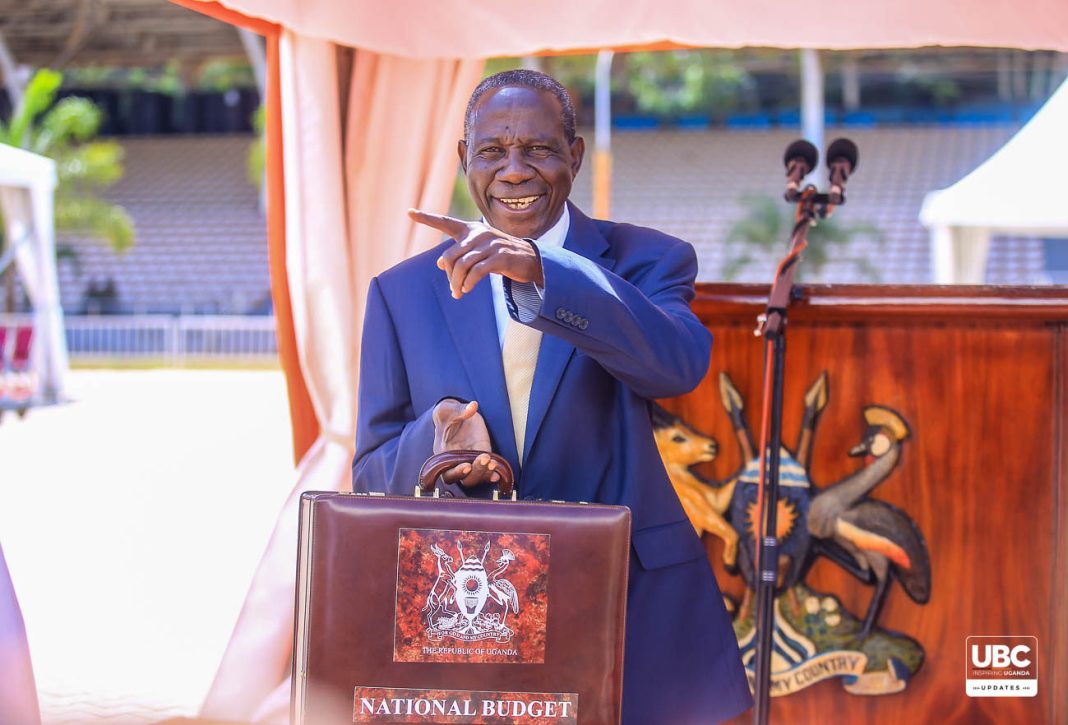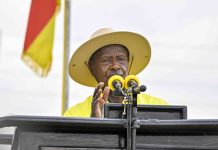The Ministry of Finance, Planning and Economic Development has announced a Shs72.136 trillion national budget for the 2025/2026 fiscal year, aiming to transform every part of Uganda into a thriving commercial centre.
Presenting the budget at the Kololo Ceremonial Grounds on Thursday, 12 June 2025, Finance Minister Matia Kasaija outlined the government’s ambitious vision to fully monetize the economy, anchored in value-driven agriculture, industrial expansion, digital innovation, and enhanced market accessibility.
Against a backdrop of sustained economic momentum, Kasaija described a Uganda ready to shift from resilience to accelerated growth.
“The upcoming financial year and medium-term plans are centered on the people and generating wealth,” he remarked.
Accordingly, the fiscal year’s theme is: “Full Monetisation of Uganda’s Economy through Commercial Agriculture, Industrialisation, Expanding and Broadening Services, Digital Transformation and Market Access.”
The Shs72.3 trillion fiscal framework ranks among the nation’s largest, with domestic collections projected at Shs37.2 trillion—covering about 60% of the total. The remainder will be sourced through loans and external assistance. The projected budget gap stands at 7.6% of GDP.
Kasaija assured the public of the government’s roadmap to boost domestic revenue generation, broaden the tax net, and enhance revenue collection systems.
“Next year, we plan to raise Shs37.2 trillion from within,” he said, highlighting efforts to curb smuggling, address graft at URA, and utilise tools like the Electronic Fiscal Receipting and Invoicing System to improve compliance.
Key sectors including health, education, agriculture, infrastructure, and tourism were given notable allocations.
The health sector received Shs5.87 trillion, prioritising operationalising Health Centre IVs, expanding e-health technologies, and strengthening emergency care. Twenty digital X-ray machines have been delivered and CT scanners deployed in 14 of 16 regional referral hospitals.
“We are enhancing our national ambulance and emergency response network,” Kasaija affirmed.
In education, Shs5.04 trillion was dedicated to funding Universal Primary and Secondary Education, student financial aid, construction of seed schools, teacher recruitment, and digital monitoring of institutions.
The minister also announced the forthcoming opening of Bunyoro and Busoga universities and reaffirmed investment in sports infrastructure ahead of CHAN and AFCON 2027.
“To ensure quality standards are upheld, all public schools and TVETs are now subject to digitised inspections,” he noted.
Economic empowerment initiatives saw renewed focus, with Shs2.43 trillion allocated to the Parish Development Model (PDM), Emyooga, Uganda Development Bank, and related community-based programs.
Kasaija specified that PDM would receive Shs0.59 trillion in FY2025/2026, ensuring each parish continues to benefit from Shs100 million annually.
“These initiatives are enhancing livelihoods, boosting food security, and creating employment,” he added.
So far, over 2.6 million Ugandans have accessed PDM funding, investing in agriculture, livestock, poultry, and microenterprises. To improve transparency, the system is now fully digitised via WENDI and ZAIDI applications.
To support agro-industrialisation, the government allocated Shs1.86 trillion. This will fund agricultural innovation, irrigation projects, extension services, inputs, and value addition. The ministry has completed 145 solar-powered irrigation systems, with 157 more underway.
The Agricultural Credit Facility, with over Shs1 trillion disbursed, remains instrumental in transforming agriculture. “We’ve added Shs50 billion to the ACF and continue to subsidise insurance, benefitting farmers under PDM,” Kasaija said.
In the energy and industrial sectors, Shs875.8 billion was set aside for mineral development and oil & gas. The East African Crude Oil Pipeline is now 58% complete, and a deal has been sealed for a 60,000-barrel-per-day oil refinery. Oil revenue is projected to hit between US$1 billion and US$2.5 billion annually upon production in 2026.
“Uganda saves around US$72.8 million yearly on fuel imports,” Kasaija said, attributing this to the Uganda National Oil Company’s direct imports, which cut out middlemen and stabilised prices.
Tourism received Shs430 billion, with an additional Shs2.2 trillion supporting related infrastructure like transport, ICT, and security. Uganda is being positioned as a top MICE (Meetings, Incentives, Conferences, Exhibitions) destination, currently ranking 7th in Africa.
While celebrating record coffee export earnings of US$1.83 billion and US$1.52 billion in tourism revenue, Kasaija called on Ugandans to embrace value addition and diversify exports.
“It took us over 100 years to hit US$1 billion in coffee exports, yet we’ve now doubled that in a year,” he said. “We must grow more and add value before exporting.”
Kasaija projected a 7% GDP growth rate and a rise in per capita income to US$1,324 in FY2025/2026, edging Uganda closer to middle-income status.
“We’ve laid the groundwork; the pace of transformation will only accelerate from here,” he concluded.






















